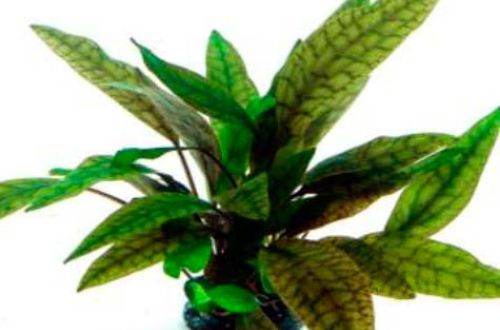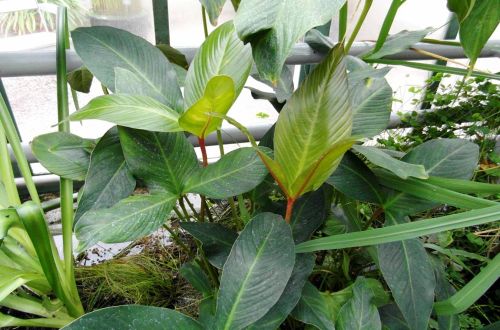
Cryptocoryne purpurea
Cryptocoryne purpurea, scientific name Cryptocoryne x purpurea. The plant is native to Southeast Asia. It was first collected in tropical swamps in the south of the Malay Peninsula. In 1902, it was scientifically described by the then director of the Singapore Botanic Gardens, H. N. Ridley. The peak of popularity in the aquarium hobby came in the 50s and 60s. In the book “Aquarium Plants” by Hendrik Cornelis Dirk de Wit, published in 1964, this plant was mentioned as the most common in Europe and North America. Currently, it has largely lost its popularity with the advent of new species and varieties on the market.

In 1982, Niels Jacobsen conducted research and proved that Cryptocoryne purpurea is not an independent species, but a natural hybrid between Cryptocoryne griffithii and Cryptocoryne cordata. Since that time, this plant has been marked with an “x” between words, meaning that we have a hybrid in front of us.
The plant forms compact bushes from many leaves collected in a rosette. Able to grow both under water and above water in an environment with high humidity and damp soil. Depending on the place of growth, the leaves take on a different shape. Under water, the leaf blade has a lanceolate shape with a pattern resembling roof tiles. Young leaves are light green, old leaves darken, becoming dark green. In the surface position, the leaves are somewhat rounded, becoming wider. The color is dark green glossy, the pattern is not traceable. In the air forms a large bright purple flower. It is thanks to him that this Cryptocoryne got its name.
The plant owes its once wide popularity to its ease of maintenance. She is not whimsical and perfectly adapts to various conditions. It is enough to provide warm soft water and nutrient soil. The level of illumination is any, but not bright. Direct sunlight should be avoided.




